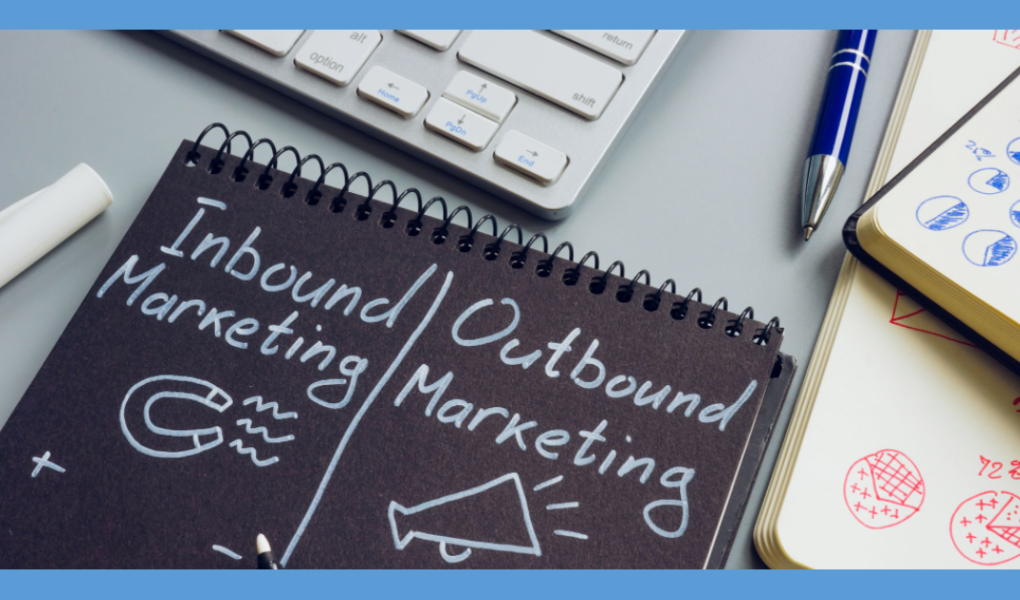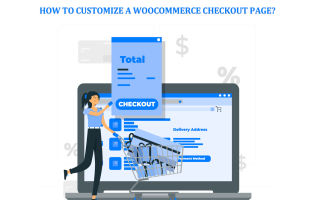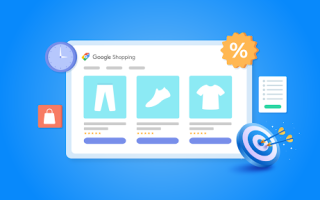Ever wondered how to create a successful marketing strategy for your business?
The secret lies in two essential components: inbound and outbound marketing. These two strategies are like two sides of the same coin, each with its unique strengths.
Inbound marketing is all about attracting potential customers to your brand. It’s like a magnet that pulls customers in by offering them valuable content, a well-optimized website for search engines, and engaging interactions on social media. It’s a strategy that focuses on creating a personalized and engaging experience for users who are already showing interest in your brand.
On the other hand, outbound marketing is about reaching out to potential customers. It’s like a loudspeaker that broadcasts your message far and wide through advertising, direct mail, and cold-calling. It’s a strategy that focuses on reaching a wider audience and generating new leads.
But here’s the key: you can’t rely solely on one or the other. It’s about finding the perfect balance between the two. A successful marketing strategy requires a blend of both inbound and outbound marketing to ensure that your efforts are effective and consistent.
Imagine creating a seamless user experience by combining the strengths of inbound and outbound marketing. You’re crafting valuable content that resonates with your target audience, and using social media and email marketing to attract potential customers and build your brand. Simultaneously, you’re expanding your reach and bringing in new leads through paid advertising and direct mail.
A well-rounded marketing strategy that skillfully incorporates both inbound and outbound tactics can significantly boost your online presence and attract more customers. So, are you ready to master inbound and outbound marketing? Let’s dive in!
Table of Contents
Key Differences Between Inbound and Outbound Marketing
Understanding the difference between inbound and outbound marketing is crucial for any business aiming to create a comprehensive and effective marketing strategy. While both strategies aim to attract potential customers, they do so in fundamentally different ways. Here’s a closer look at the key differences between inbound and outbound marketing and the impact they can have on your business:
- Direction of Communication
The primary difference between inbound and outbound marketing lies in the direction of communication. Inbound marketing is about attracting customers to your business by creating valuable content and experiences tailored to them. It’s a pull strategy that draws people into your website or social media platforms. On the other hand, outbound marketing is a push strategy where the business initiates the conversation and sends its message out to an audience.
- Customer Engagement
Inbound marketing focuses on creating valuable content and experiences that pull potential customers towards the company and its products. It’s about providing value and building trust with the audience. Outbound marketing, however, is more about pushing a message out to as many people as possible, often through traditional advertising methods like TV commercials, print ads, and cold calls.
- Targeting
Inbound marketing is typically more targeted, focusing on creating content and experiences that are tailored to a specific audience. This approach allows businesses to attract customers who are more likely to be interested in their products or services. Outbound marketing, on the other hand, often targets a broader audience, with the goal of reaching as many people as possible.
- Cost and ROI
Inbound marketing often requires a significant investment of time and resources upfront, but it can deliver a higher return on investment (ROI) over the long term. This is because the content and experiences created through inbound marketing can continue to attract and engage customers long after they’ve been created. Outbound marketing, on the other hand, often requires a larger financial investment upfront (for example, in advertising), and the results can be more immediate but may not have the same long-term impact.
- Measurement
Inbound marketing strategies are often easier to measure in terms of performance. With digital tools and analytics, businesses can track the success of their content and campaigns, understand their audience better, and adjust their strategies accordingly. Outbound marketing can be more challenging to measure, especially when it comes to traditional methods like TV and print ads.
- Customer Relationship
Inbound marketing often leads to a stronger relationship with the customer. By providing valuable content and experiences, businesses can build trust and loyalty with their audience. Outbound marketing, while it can certainly attract attention and create awareness, doesn’t typically foster the same level of relationship or engagement with the audience.
By understanding these differences, businesses can better decide how to balance their use of inbound and outbound marketing strategies. It’s important to remember that both strategies have their place in a comprehensive marketing plan. The key is to understand your audience, your business goals, and how each strategy can best support those goals.
See also: 10 Unmissable Reasons To Learn Digital Marketing In 2023
What is Inbound Marketing?
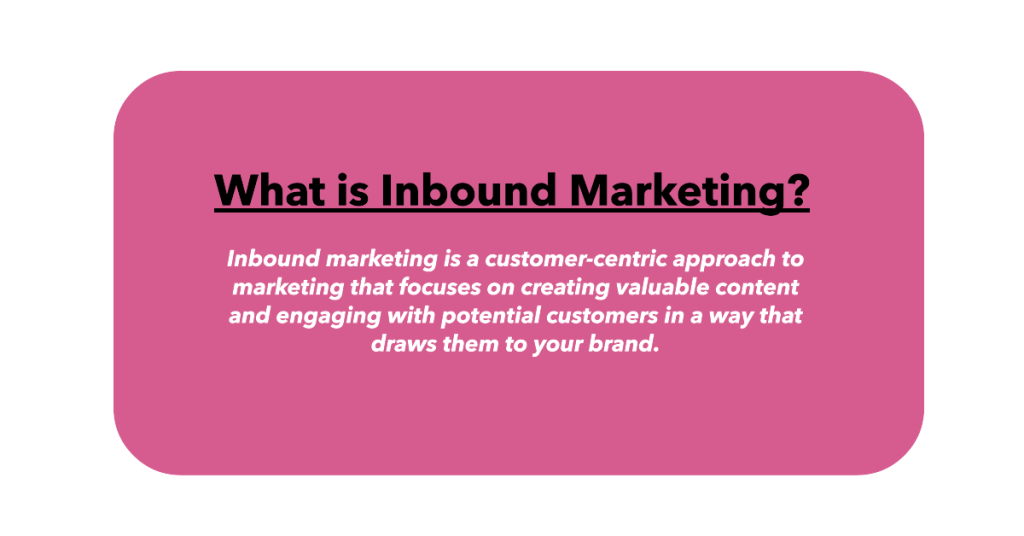
Inbound marketing is a customer-centric approach to marketing that focuses on creating valuable content and engaging with potential customers in a way that draws them to your brand. This involves tactics such as creating blog posts, social media content, and email marketing campaigns that provide valuable information and solutions to your target audience’s problems.
This is achieved through various tactics such as search engine optimization, social media marketing, content creation, email marketing, and other methods that help draw potential customers to your website or social media pages.
By providing valuable information and engaging experiences, inbound marketing can establish your brand as a trusted authority in your industry and build strong relationships with your audience.
One of the key advantages of inbound marketing is its ability to target specific demographics and buyer personas. By creating content that speaks directly to your target audience, you can attract and retain customers who are more likely to be interested in your products or services. Additionally, inbound marketing is often more cost-effective than traditional outbound marketing methods, as it relies on organic growth and word-of-mouth rather than expensive advertising campaigns.
Examples of how inbound marketing can benefit a user’s experience:
1. Content Marketing
Content marketing is a powerful inbound marketing technique that can benefit the user experience in a number of ways. By creating valuable and relevant content, businesses can attract potential customers and provide them with solutions to their problems. This can benefit the user’s experience by providing them with the information they need to make informed decisions and solve their problems.
Moreover, content marketing can help businesses establish themselves as authorities in their industry. By creating high-quality content that provides value to their audience, businesses can build trust and credibility with their potential customers. This can benefit the user’s experience by providing them with a reliable source of information and recommendations.
2. Search Engine Optimization (SEO)
SEO involves optimizing your website and content to improve your visibility in search engine results pages (SERPs). This can include conducting keyword research, optimizing meta tags, and creating high-quality content that is designed to rank well in search results.
By ranking higher in search results, you can attract more organic traffic to your website and provide users with relevant and useful information. This can benefit the user’s experience by making it easier for them to find the information and solutions they need.
Search Engine Optimization (SEO) is an essential inbound marketing technique that can benefit the user experience in several ways. Here are a few ways that SEO can improve the user experience:
- Improved Visibility: By optimizing your website and content for search engines, you can improve your visibility in search results. This makes it easier for users to find your content when they search for relevant topics, which can benefit the user experience by providing them with access to useful and relevant information.
- Better User Experience Design: SEO also involves optimizing the user experience design of your website, such as ensuring that your site loads quickly, is easy to navigate, and is mobile-friendly. These factors can benefit the user experience by making it easier for users to access and interact with your content.
- Relevant and High-Quality Content: SEO also requires businesses to create high-quality and relevant content that is designed to rank well in search results. This can benefit the user experience by providing them with valuable and informative content that is tailored to their search queries and interests.
- Trust and Authority: By ranking higher in search results, businesses can establish themselves as trustworthy and authoritative sources of information in their industry. This can benefit the user experience by providing them with reliable and credible information that they can trust.
Overall, by using SEO as an inbound marketing technique, businesses can benefit the user experience by improving their visibility, user experience design, content quality, and trustworthiness.
3. Social Media Marketing
Social media marketing involves building a presence on social media platforms such as Facebook, Twitter, Instagram, and LinkedIn. By sharing valuable content, engaging with your followers, and promoting your products or services, you can increase your brand awareness and drive traffic to your website. This can benefit the user’s experience by providing them with a platform to engage with your brand and get to know your products or services better.
See also: The Future of Social Media Marketing to Drive Growth
4. Email Marketing
Email marketing involves sending targeted and personalized emails to your subscribers in order to nurture leads and turn them into customers. This can include segmenting your email list based on demographics and interests and creating relevant and engaging content that resonates with your audience. By providing users with personalized content and offers that address their specific needs, you can benefit the user’s experience by providing them with content that is tailored to their interests.
5. Influencer Marketing
Influencer marketing involves partnering with influencers in your industry to promote your products or services. This can include collaborating with influencers to create content, promote your products or services, or participate in events or webinars. By tapping into the influencers’ followers, you can drive more traffic to your website and benefit the user’s experience by providing them with social proof and recommendations from trusted sources.
Overall, inbound marketing techniques can benefit the user’s experience by providing them with valuable information, personalized content, engagement opportunities, and social proof. By using these techniques, businesses can build strong relationships with their audience and establish a positive reputation in their industry.
See also: Crafting The Perfect SEO Marketing Strategy: A Step-By-Step Guide
Tips for finding high-quality inbound marketing content
Before diving into finding high-quality inbound marketing content, it’s important to know what to look for. Here are some tips to help you find valuable content that can benefit your business.
- Use Trusted Sources: When searching for inbound marketing content, it’s important to use trusted sources such as reputable blogs, industry publications, and thought leaders in your industry. This can help ensure that the information you’re getting is accurate, reliable, and up-to-date.
- Check for Author Expertise: Before reading or sharing any content, it’s important to check the author’s expertise and credentials. Look for authors who have experience in your industry or have a proven track record of providing valuable content in your niche.
- Look for Actionable Insights: The best inbound marketing content provides actionable insights that you can apply to your own business. Look for content that provides step-by-step guides, case studies, or real-life examples that you can learn from and apply to your own marketing strategy.
- Check for Visual Elements: Inbound marketing content should be visually appealing and include relevant images, infographics, or videos. Look for content that includes high-quality visual elements that help to convey the message and enhance the user experience.
- Read Reviews and Ratings: Before investing time in reading a piece of inbound marketing content, check for reviews and ratings from other readers. This can give you an idea of the quality and relevance of the content and help you decide whether it’s worth your time.
- Follow Thought Leaders: Follow thought leaders in your industry can help you stay up-to-date on the latest trends and best practices in inbound marketing. Follow influencers and thought leaders on social media, subscribe to their blogs or newsletters and attend their webinars or events to stay informed.
What is Outbound Marketing?
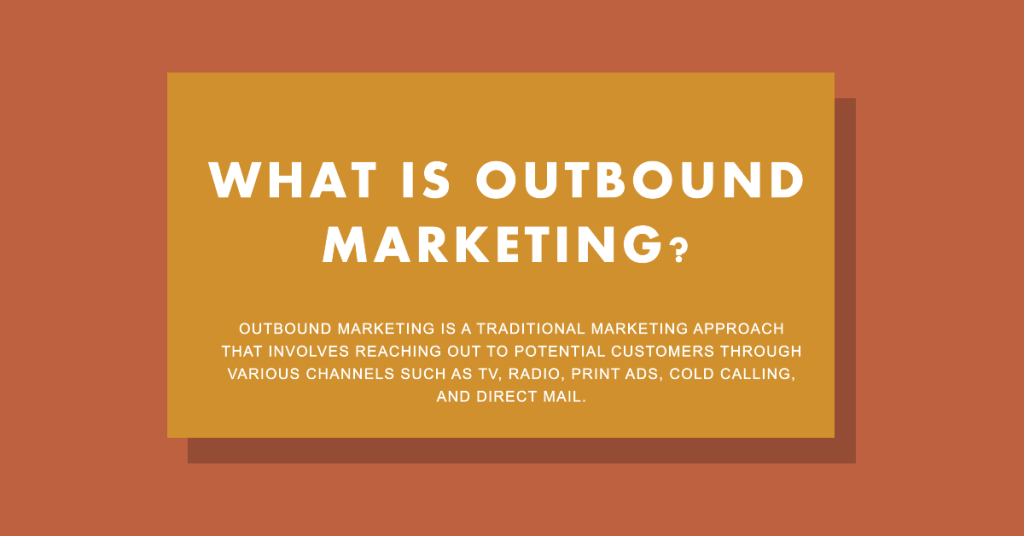
Outbound marketing is a traditional marketing approach that involves reaching out to potential customers through various channels such as TV, radio, print ads, cold calling, and direct mail.
In contrast to inbound marketing, which focuses on attracting customers by providing valuable content and engaging with them on various platforms, outbound marketing aims to interrupt the audience and grab their attention.
Unlike inbound marketing, which focuses on attracting potential customers through relevant and valuable content, outbound marketing interrupts a user’s experience and may not always be well received. However, outbound marketing can still be effective in some situations, such as when targeting specific demographics or promoting time-sensitive offers.
Examples of how outbound marketing can affect a user’s experience
When it comes to outbound marketing, the user’s experience can be affected in both positive and negative ways. On the positive side, outbound marketing can help create awareness and provide a more personalized experience. However, on the negative side, it can interrupt, annoy, or disrupt a user’s experience. It’s important for businesses to carefully consider the impact of their outbound marketing efforts and balance them with inbound marketing strategies to ensure a positive overall user experience.
Here are some examples:
- Positive impacts:
- Awareness: Outbound marketing can help create awareness of a product or service among a wide audience, who may not have otherwise known about it.
- Personalization: Outbound marketing can be tailored to specific demographics or interests, which can result in a more personalized experience for the user.
- Negative impacts:
- Interruption: Outbound marketing interrupts a user’s experience by pushing content to them, which may not always be relevant or desired.
- Annoyance: Outbound marketing can sometimes be seen as intrusive or annoying, especially if the user is bombarded with too many ads or promotions.
- Disruption: Outbound marketing can disrupt a user’s experience, such as when a TV commercial interrupts a show or when a pop-up ad blocks the content on a website.
Overall, outbound marketing can be a useful strategy for reaching a wide audience and promoting products or services, but it’s important to balance it with inbound marketing and ensure that it doesn’t negatively impact the user’s experience.
Tips for avoiding unwanted outbound marketing content
Outbound marketing can be a valuable way to reach new customers and promote your business, but it’s important to ensure that your efforts aren’t unwanted or intrusive. By following these tips, you can avoid unwanted outbound marketing content and have a more positive experience as a user.
Here are some tips for avoiding unwanted outbound marketing content:
- Opt-out: If you receive outbound marketing emails or messages, make sure to look for an opt-out option. This allows you to unsubscribe from future communications and stop receiving unwanted content.
- Be cautious with personal information: Be careful about sharing your personal information, as it may lead to more outbound marketing efforts targeted towards you. Consider only providing necessary information to businesses or organizations you trust.
- Use ad-blocking software: Consider using ad-blocking software on your web browser to avoid pop-up ads or other unwanted content. This can help to limit the amount of outbound marketing you see while browsing online.
- Check privacy policies: Before providing your personal information to a website or service, check their privacy policy to ensure that they won’t share your information with third-party marketers. This can help to minimize the amount of unwanted outbound marketing you receive.
- Register with the National Do Not Call Registry: If you’re receiving unwanted telemarketing calls, you can register with the National Do Not Call Registry to stop them.
By following these tips, you can take control of the outbound marketing content you receive and have a more positive overall user experience.
Balancing Inbound and Outbound Marketing for the Best User Experience
While inbound and outbound marketing strategies can both be effective for reaching new customers and promoting your business, it’s important to strike a balance between the two for the best user experience.
By using both inbound and outbound marketing in the right way, you can create a seamless user experience that engages your audience and drives conversions. In this section, we’ll explore the importance of balancing inbound and outbound marketing strategies and how to do it effectively.
10 Tips for Creating a Cohesive Marketing Plan That Prioritizes User Experience
Creating a marketing plan that seamlessly blends inbound and outbound strategies while prioritizing user experience can seem like a daunting task. However, with the right approach, it’s entirely achievable. Here are ten powerful tips to help you craft a user-centric marketing plan:
- Understand Your Audience: The foundation of any successful marketing strategy is a deep understanding of your audience. Know their preferences, needs, and the way they consume content. This knowledge will allow you to tailor your messaging and choose the most effective channels for promoting your content.
- Implement a Content Calendar: A well-structured content calendar is a marketer’s best friend. It helps you plan your inbound and outbound marketing activities in advance, ensuring a consistent and steady flow of content that resonates with your audience’s needs and preferences.
- Strategize Social Media Use: Social media is a potent tool for promoting both inbound and outbound marketing content. When used strategically, it can help you reach a wider audience and engage with potential customers on a more personal level.
- Measure Your Results: Regularly measuring your results is crucial to determine the effectiveness of your inbound and outbound marketing strategies. It helps you identify what’s working, what’s not, and where adjustments need to be made.
- Refine Your Approach Continuously: As your audience and market evolve, so should your inbound and outbound marketing strategies. Continuously refining your approach based on feedback and data can help you stay ahead of the curve and maintain a competitive edge.
- Don’t Neglect SEO: Inbound marketing heavily relies on SEO to attract organic traffic to your website. By optimizing your content for search engines, you can ensure the effectiveness and sustainability of your inbound marketing efforts over the long term.
- Maintain Consistent Messaging: To avoid confusing your audience, it’s important to maintain consistent messaging across your inbound and outbound marketing channels. Consistency helps reinforce your brand identity and makes your marketing efforts more cohesive.
- Use Targeted Advertising: Outbound marketing can be more effective when it’s targeted to specific audience segments. This approach helps you reach the right people with the right message at the right time, increasing the chances of engagement and conversion.
- Embrace Automation: Automation tools can help streamline your inbound and outbound marketing efforts, making it easier to manage multiple channels and campaigns simultaneously. Automation can save time, reduce errors, and increase efficiency.
- Focus on the Customer Journey: Both inbound and outbound marketing strategies should be designed with the customer journey in mind. Understanding the different stages of the customer journey and tailoring your messaging accordingly can improve the overall user experience and drive more conversions.
In addition to these tips, it’s beneficial to learn from successful companies that have effectively balanced inbound and outbound marketing efforts. Companies like HubSpot and Airbnb have demonstrated that a cohesive marketing plan that prioritizes user experience and utilizes a mix of tactics can effectively reach the target audience and achieve marketing goals.
See also: Why SEO Matters for Small Businesses?
Creating a Seamless User Experience
Creating a seamless user experience across all marketing channels is not just a nice-to-have; it’s a must-have in today’s digital landscape. A smooth, consistent user experience can significantly enhance customer satisfaction, build brand loyalty, and ultimately drive conversions. Here are some strategies to help you build a seamless user experience:
- Conduct a User Experience Audit: Start by evaluating your existing user experience across all marketing channels. This includes your website, social media pages, email campaigns, and any other customer touchpoints. Identify areas of friction or confusion that could be improved.
- Simplify Navigation: Make it easy for users to find what they’re looking for by organizing your content and navigation in a clear, intuitive way. A user-friendly design can significantly enhance the user experience.
- Maintain Consistent Branding: Consistency is key to creating a seamless user experience. Ensure that all marketing channels use the same branding, messaging, and visual elements. This creates a cohesive and recognizable brand experience across all touchpoints.
- Optimize for Mobile: With the increasing number of users accessing content on mobile devices, it’s essential to ensure that all marketing channels are optimized for mobile. A mobile-friendly design can significantly improve the user experience.
- Personalize Content: Personalization can significantly enhance the user experience. Use data and analytics to personalize content and messaging for each user, creating a more relevant and engaging experience.
- Leverage User Feedback: User feedback can provide valuable insights into how to improve the user experience. Regularly solicit feedback from your users and use this information to make continuous improvements.
- Prioritize Speed and Performance: Slow load times and performance issues can significantly detract from the user experience. Regularly test and optimize your website and other marketing channels for speed and performance.
- Ensure Accessibility: Make sure your content is accessible to all users, including those with disabilities. This not only improves the user experience but also ensures compliance with accessibility laws and guidelines.
- Provide Clear Calls to Action: Guide users through the desired actions by providing clear and compelling calls to action. This can help improve the user experience by making it easy for users to understand what steps they should take next.
- Offer Excellent Customer Support: Providing excellent customer support can significantly enhance the user experience. Make sure users can easily find and access support when they need it.
By implementing these strategies, you can create a seamless user experience that not only meets but exceeds your customers’ expectations. Remember, a great user experience is not a one-time effort but an ongoing commitment to your customers’ needs and preferences.
Closing Thoughts
To sum up, both inbound and outbound marketing are important for your business. Inbound marketing helps you attract customers by providing useful content and building relationships. On the other hand, outbound marketing helps you reach out to a wider audience and make them aware of your products or services.
Remember, it’s not about choosing one over the other. The best marketing strategy is one that uses both inbound and outbound marketing in a balanced way. This way, you can reach more people, build stronger relationships with your customers, and ultimately, grow your business.
So, keep creating helpful content, stay active on social media, and don’t forget about SEO for inbound marketing. At the same time, use targeted advertising and direct mail to reach out to new customers for outbound marketing. By doing this, you’ll be able to make the most of both worlds and create a successful marketing strategy for your business.
Ready to take your marketing strategy to the next level? Get in touch with us today! We’re here to help you create a balanced marketing plan that effectively uses both inbound and outbound strategies to boost your online presence and attract more customers. Let’s work together to grow your business. Contact us now!
